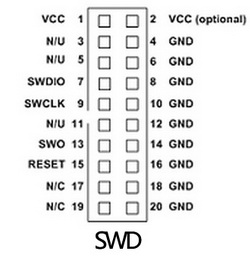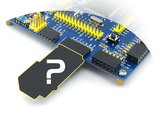Details
STM32 development board designed for the ST official tool 32F429IDISCOVERY, and integrates various standard interfaces, pretty easy for peripheral expansions.

Overview
Open429Z-D is an STM32 development board designed for the ST official tool 32F429IDISCOVERY, which features the STM32F429ZIT6 microcontroller onboard.
The Open429Z-D supports further expansion with various optional accessory boards for specific application. The modular and open design makes it the ideal for starting application development with STM32 series microcontrollers.
What's on the mother board

- 32F429IDISCOVERY socket: for easily connecting the 32F429IDISCOVERY
- MCU pins connector: all the MCU I/O ports are accessible on expansion connectors for further expansion
- USB connector: USB to UART via the onboard convertor PL2303
- I2C1/I2C2 interface: easily connects to I2C peripherals such as I/O expander (PCF8574), FRAM (FM24CLxx), etc.
- I2S2/I2S3/I2C1 interface: easily connects to I2S peripherals such as audio module, etc.
- DCMI interface: for connecting camera
- SDIO interface: for connecting Micro SD module, features much faster access speed rather than SPI
- CAN1 interface: communicates with accessory boards which feature the CAN device conveniently
- CAN2 interface: communicates with accessory boards which feature the CAN device conveniently
- UART3 interface: easily connects to RS232, RS485, USB TO 232, etc.
- SPI1/SPI4 + AD/DA interfaces:
- easily connects to SPI peripherals such as DataFlash (AT45DBxx), SD card, MP3 module, etc.
- easily connects to AD/DA modules (SPI1 features AD/DA alternative function)
- UART2 interface: easily connects to RS232, RS485, USB TO 232, etc.
- 8-bit FMC interface: easily connects to peripherals such as NandFlash
- SAI1 interface: for connecting audio modules
- ONE-WIRE interface: easily connects to ONE-WIRE devices (TO-92 package), such as temperature sensor (DS18B20), electronic registration number (DS2401), etc.
- 5V DC jack
- 5V/3.3V power input/output: usually used as power output, also common-grounding with other user board
- JTAG/SWD interface: for debugging/programming
- Joystick jumper
- short the jumper to connect the joystick to default I/Os used in example code
- open the jumper to connect the joystick to custom I/Os via jumper wires
- Boot mode switch: for configuring BOOT0 pin
- USB to UART jumper
- AMS1117-3.3: 3.3V voltage regulator
- PL2303: USB to UART convertor
- 12MHz crystal
- 5V DC power switch
- Power indicator
- UART1 indicator
- Joystick: five positions
What's on the 32F429IDISCOVERY
- STM32F429ZIT6 microcontroller featuring 2 Mbytes of Flash memory, 256 Kbytes of RAM in an LQFP144 package
- On-board ST-LINK/V2-B
- mbed™ -enabled (mbed.org)
- USB functions:
- debug port
- virtual COM port
- mass storage
- Board power supply: through the USB bus or from an external 3 V or 5 V supply voltage
- 2.4" QVGA TFT LCD
- 64-Mbit SDRAM
- L3GD20, ST MEMS motion sensor 3-axis digital output gyroscope
- Six LEDs:
- LD1 (red/green) for USB communication
- LD2 (red) for 3.3 V power-on
- Two user LEDs: LD3 (green), LD4 (red)
- Two USB OTG LEDs: LD5 (green) VBUS and LD6 (red) OC (over-current)
- Two push-buttons (user and reset)
- USB OTG with micro-AB connector
- Extension header for LQFP144 I/Os for a quick connection to the prototyping board and an easy probing
- Comprehensive free software including a variety of examples, part of STM32CubeF4 package or STSW-STM32138 for legacy standard libraries usage
32F429IDISCOVERY: TOP LAYOUT


32F429IDISCOVERY: BOTTOM LAYOUT


Photos
Note:
The 32F429IDISCOVERY integrates ST-LINK/V2-B for programming/debugging (SWD only).
JTAG/SWD interfaces
The figure 1, and 2 show the header pinouts of JTAG/SWD interface
Figure 1. JTAG Header Pinout


Figure 2. SWD Header Pinout


Development Resources
- Schematic
- Demo code (examples in C, μC/OS-II)
- Related software (KEIL etc.)
- STM32 Datasheets
- STM32 development documentations































